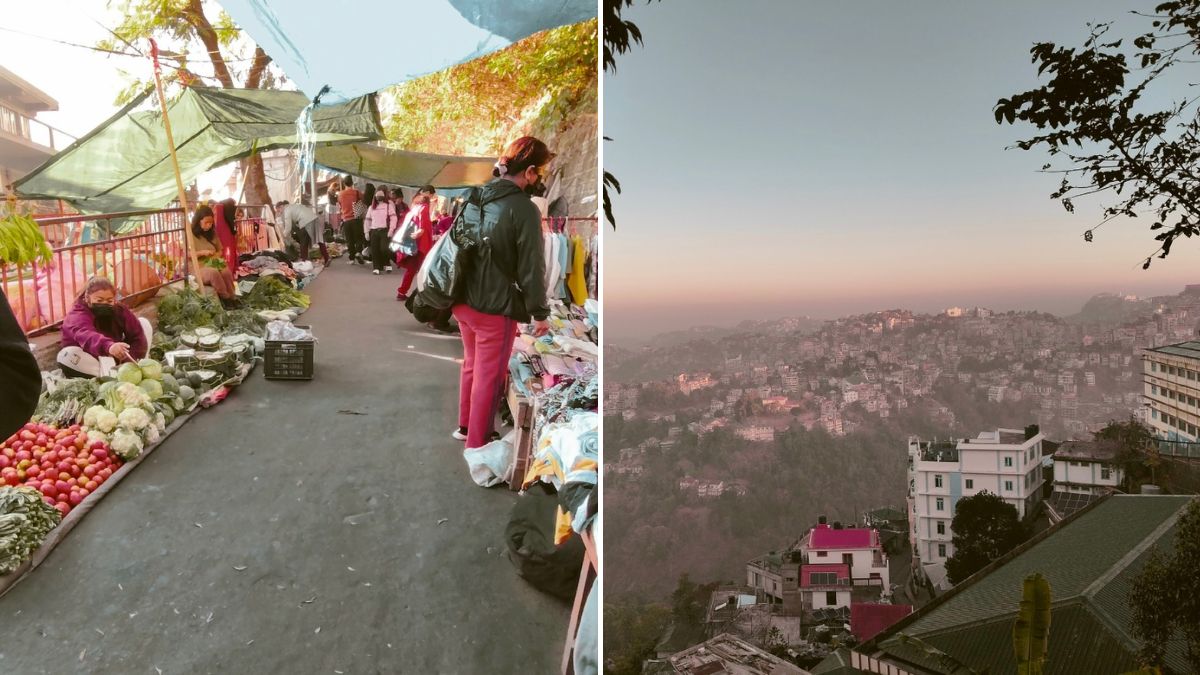The binding charm and lingering magic of Mizoram

It is perhaps only once in a lifetime that a person from the southernmost tip of India might plan a trip to Mizoram. But after the first visit, there is a palpable change in you. At least in my case, there was a clear and definite change. The charm of Mizoram binds you, its magic lingers. You find yourself longing to return—again and again.
A person from Kerala would find several reasons to be drawn to Mizoram. First and foremost is their impressive literacy rate, which closely follows that of Kerala. Then there’s the stunning landscape, full of rolling hills and scenic beauty. One would also be struck by the respect and prominence women enjoy in Mizo society. Don’t be surprised to see smoke curling around the faces of many women—mind you, it is simply a reflection of a common habit in Mizoram.
The first thing a no-horn-savvy person like me noticed in Mizoram is the absence of jarring vehicle horns on the streets. Even if you tried, you would hardly find anyone getting irritated with the vehicle ahead of them on Aizawl’s roads.
The roads are narrow, often winding up and down the hills, but what stands out is the deeply ingrained driving culture: one of patience and mutual respect.
Of course, emergencies can arise. In such cases, a simple blink of the headlights is enough—the vehicle in front will politely make way. As a gesture of thanks, the passing driver will honk once. In response, the other driver will honk twice—a warm, welcoming acknowledgement.
In Aizawl, streets are switched off by 7.30pm. Even during that time women can be seen walking freely, without fear of prying eyes or judgement on their womanhood. While there are reports of drug use and habitual smoking, these do not cast a shadow on their unburdened, happy walks through the city—at least to me. For this, we must thank the young people of Mizoram. Everywhere in Mizoram women are the forefront of society. On the other hand, Mizo men are far from idle—they contribute to societal needs.
One remarkable instance of youth initiative in Mizoram is seen during death. Whether the deceased is a Mizo or a non-Mizo, the Young Mizo Association (YMA) takes full responsibility for all rituals and related arrangements until the cremation is completed. To fund these activities, the YMA collects a modest annual contribution, which is entirely voluntary. Even those unable to pay are not left behind—assistance is extended to them without hesitation. In fact, it is noteworthy that the YMA even makes arrangements to bring back the body from neighbouring states if someone from Mizoram passes away there.
The commitment of Mizo youth to social welfare is further evident in their regular street and road-cleaning initiatives. A specific day—usually a weekend—is announced in advance, during which the young people of a locality gather to clean the streets and small roads in their area. This collective effort reflects a strong sense of community and civic responsibility.
Every Saturday, the streets of Aizawl come alive with bustling wayside market. From a pin to pork, almost everything is available here between 6 am and 6.30 pm. What’s striking, however, is that not a single man is seen selling—it’s women and women alone who run the entire show. To accommodate this vibrant weekly affair, many of the city’s interior roads remain closed.
Once the market winds up, a group of young people take over the streets—armed with brooms and bins, they clean up with remarkable efficiency and energy. It’s yet another example of how the young Mizo spirit continues to shine.
Travel to the interior villages, and you will notice houses made of grass, tin sheets, mud, or bricks. But what’s truly astonishing is how many of these homes are left completely open and unlocked—even when the residents are away for days, visiting relatives or children. Such is the level of trust in these communities; people believe in each other, and the village as a whole looks after everyone’s belongings.
“Earlier, it was common to leave houses unlocked,” says Brother Moses Kurien, a native of Kozhencherry in Kerala who has been living in the northeast for nearly 30 years. He currently serves as the principal of St. Paul’s Higher Secondary School in Aizawl, run by the Moundfort Brothers.
He shared another fascinating aspect of Mizo culture: If an outsider arrives at a village and is unable to return that day, there’s no need to worry. The guest can confidently approach the village chief, who will personally open the door to a home—one whose residents are away for a few days—and welcome the visitor to stay there.
Even the name Mizoram echoes a sense of belonging. ‘Mi’ means mine, ‘Zo’ refers to the dominant tribe of the region, and ‘Ram’ means land or country. Put together, Mizoram quite literally means the land of the Zo people. Despite it being the homeland of the Mizos, their doors are never closed to outsiders.
A prime example of this openness can be seen in their schools, many of which are run by Malayalis. Beyond the Zo tribe, Mizoram is home to several other communities, each with its own stories of inheritance, tradition, and culture. To fully capture all those tales, this travelogue would have to stretch into hundreds—if not thousands—of lines more.
So, folks, aren’t you eager to go to Mizoram at least once, to witness the lives of the people there? Do plan a visit—I assure you that Mizoram will never disappoint you.
The writer is editor-in-charge of Malayala Manorama’s Thozhilveedhi.
Tourism